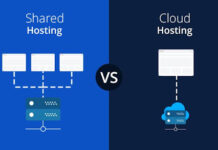Fibre-optic leased lines are often described in terms of line speed and bearer speed. They’re usually expressed as a 20/100 ratio. The number before the slash is the line speed, while the number after the slash is the bearer.
When you use the connection, the line speed is the symmetrical speed you’ll get for both uploads and downloads.
The carrier determines the line’s maximum speed. If your needs change in the future (for example, if your business grows), and your current line speed is slower than the bearer speed, you should be able to upgrade your bandwidth for a little monthly price.
If a person has a 20/100 connection, for example, he or she can upload and download at 20Mbps.
They may then be scaled up to 100Mbps in stages, giving you peace of mind that your connection will scale with your business’s needs. The most common bearer sizes are 100Mbps and 1Gbps, with 10Gbps being available (although not widely).
Leased Fibre Lines
Fibre Leased Lines transfer light across fibre optic cables to create a dedicated symmetric data connection. Almost all Leased lines especially the ‘backhaul’ section, employ fibre for a significant percentage of the journey. Some leased lines, on the other hand, employ fibre throughout.
If you have the option of choosing between Fibre optic leased lines and DSL, go with Fibre.
Fibre leased lines are the fastest of all the virtual leased lines.
Leased DSL Lines
Other sorts of low-bandwidth leased lines are provided through DSL. Leased lines are symmetric and non-contended, whereas most DSL connections are asymmetric and compete. However, an asymmetric alternative to ADSL known as SDSL can be used. This provides a faster upload speed than regular ADSL, enabling for the formation of asymmetric connections.
There’s also ADSL2+Annex M, which is a more current type of ADSL. This is faster than regular ADSL in terms of upload speed. It’s not even close to being symmetric. It is feasible to provide symmetric connections of up to 3.5Mbps or less by purposely limiting your downstream connection.
Because ADSL and SDSL speeds decrease as you travel further away from your exchange, a DSL leased line may not be able to provide you with the rate you desire. It’s usually only used when a fibre leased line isn’t accessible.
ADSL2+ Annex M and a download speed that is significantly lower than the line’s capacity.
The majority of DSL services have competed. In other words, when your traffic travels between your local telephone exchange and your ISP’s network, it must compete with that of other subscribers. This is, however, a cost-cutting business leased lines choice aimed at lowering backhaul and IP transit expenses. As a result, dedicated DSL connections are conceivable.
The farther you are from your local phone exchange, the slower DSL becomes. It is, nevertheless, feasible to link a number of them together.
MPLS Leased Lines
These leased lines are becoming increasingly common.
Multi-Protocol Label Switching (MPLS) is an acronym for Multi-Protocol Label Switching. It’s a method of getting data from point A to point B by encapsulating it, applying one or more labels to it, and then selecting where to send it depending on those labels.
That may seem insignificant until you consider how easily a corporate WAN can become congested.
Consider a 12 site WAN with 11 regional locations each with a 2Mbps connection and a 10Mbps connection at the head office (including 4Mbps of Internet access). The regional locations might theoretically send 22Mbps of traffic to the Head Office. From the Internet to Head Office, another 4Mbps would be added. That’s 26 megabits per second.
These leased lines are becoming increasingly common.
Multi-Protocol Label Switching (MPLS) is an acronym for Multi-Protocol Label Switching. It’s a method of getting data from point A to point B by encapsulating it, applying one or more labels to it, and then selecting where to send it depending on those labels.
That may seem insignificant until you consider how easily a corporate WAN can become congested.
Consider a 12 site WAN with 11 regional locations each with a 2Mbps connection and a 10Mbps connection at the head office (including 4Mbps of Internet access). The regional locations might theoretically send 22Mbps of traffic to the Head Office. From the Internet to Head Office, another 4Mbps would be added. That’s 26 megabits per second
The cost difference between leased lines and broadband.
Leased lines typically cost more than a broadband internet connection. However, because you’re not comparing like-for-like products, it’s more advantageous to analyse the variations in value between broadband and leased line internet. While switching from a broadband connection to a leased line connection may increase your expenditures, you will be paying for additional services and perks (described in this piece! ), so keep that in mind when comparing prices.
Furthermore, when choosing between broadband or leased line connection, it’s important to think about the various contracts you’ll encounter.
You’ll be locked into a lengthier contract with a leased line internet connection than you would with a broadband connection. Normally, you’ll be required to sign a 36-month contract, although this isn’t always the case. When you get broadband internet, the contract terms are usually shorter, ranging from 12 to 24 months. These contract lengths each have their own set of benefits and drawbacks. A longer-term contract provides more stability, and any price hikes will be delayed for a longer length of time. On the other hand, if prices fall or you need to cancel the contract for whatever reason, you’ll be locked into a contract that could be pricey to break.
The difference between broadband and leased lines in terms of connection speeds.
When compared to a typical broadband connection, leased line internet has a better connection speed. Leased lines, on the other hand, provide you with symmetrical connection speeds. This indicates that your download and upload speeds are identical.
The download speed of a conventional broadband connection is far faster than the upload speed. This isn’t a problem in your home because you rarely upload large files or large amounts of data. However, in a commercial setting, the leased line connection’s greater upload speed is a significant benefit. In a nutshell, the easier it is to upload data to the internet, the better.


































